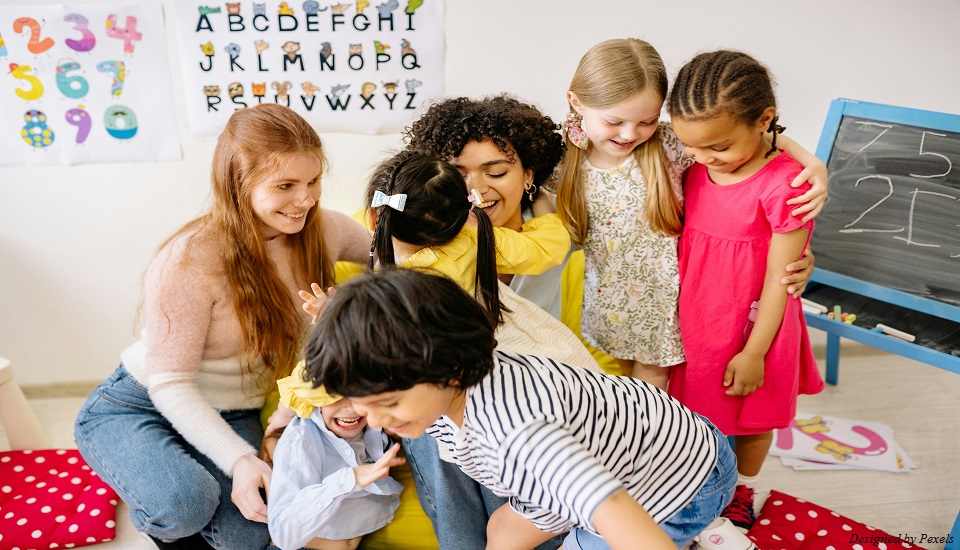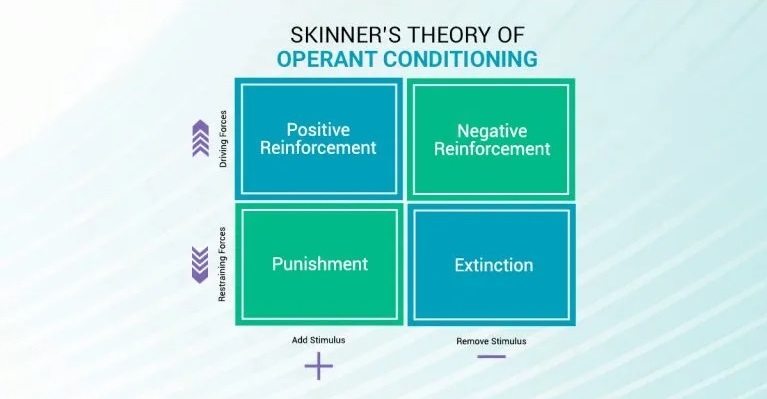
How Operant Conditioning Supports the Learning Process
21st April 2025
When a small child shares toys without being asked, or cleans up after playtime, it is not just a random good day for a teacher like you! These good behaviors usually happen because someone taught them, little by little. And yes, that someone is you.
As a teacher with an online certificate in nursery teacher training, you might already know a simple truth: notice when children do something right! When you appreciate helpful actions, kids tend to do them more often. This works so much better than only correcting mistakes- don't you agree?
Understanding Operant Conditioning in Simple Terms
At its core, operant conditioning is about learning through consequences. Children slowly figure out that what they do leads to a reaction. Based on how that moment feels, encouraging or not, they decide whether or not to do it again.

Here’s how it usually works in a classroom setting:
- You give something nice, like praise or stickers, to make a behavior happen more, also known as 'positive reinforcement.'
- Suppose you take away something that is not fun, like skipping a hard task, to strengthen behavior and this is known as 'negative reinforcement.'
- Think about adding something uncomfortable, like a time-out, to make a behavior happen less and that is known as 'positive punishment.'
- You might take something away, like a favorite toy, to make a behavior happen less and that is known as 'negative punishment.'
Positive reinforcement' is the most common teaching strategy in nursery classrooms, and for good reason. It is not severe, useful, and perfect for little ones.
Why It Works So Well in Classroom Settings
Very young children are still in the process of learning the difference between right and wrong, safe and unsafe, and kind and cruel. Operant conditioning helps build that understanding. And the plus point? Children do not feel bad, pressured, or confused.
Let's see its role in changing a child's behavior for the better:
1. Helps Children Understand What is Expected
Young learners do better when things stay the same. When a child gets a happy high-five for helping clean up, it sends a clear message: 'That was the right thing to do.'
When you praise helpful gestures, kindness, and safe actions, you pave the way for children to happily do them again. It is because they know what is expected.
2. Builds Confidence Through Small Wins
Children feel good when they receive positive feedback. Using kind words, a smile, or a sticker tells them, 'You did something great!' Now, that builds confidence.
Small wins matter a lot to your cute little students- building up and helping them with more learning.
3. Helps Create Routines and Structure
When actions like sitting quietly during story time or lining up calmly are always appreciated, they become habits.
The children start to understand that following routines leads to good things. This feeling of order makes the day go better for everyone.
4. Provides Space for Children to Control Their Feelings
For early learners, little, big feelings can come out in big ways. Glorifying calm behaviors, deep breaths, or kind words help children learn how to handle their feelings.
Instead of punishing kids for meltdowns, it is more useful for their mental well-being to help them calm down and identify their feelings.
5. Makes Learning Feel Safe and Fun
Children feel better when they know what happens next. If they know that sitting still and listening means more playtime or a fun song later, they are more likely to join in.
This type of cause-and-effect learning makes children less worried and more excited about being part of class activities.
How You Can Apply Operant Conditioning in the Classroom
By now you know why it works so well. So, let's take the advantages and see how you can change your classroom atmosphere, be it offline or online.
For online classes:
1. Positive Reinforcement
Give learners instant positive feedback when they answer correctly or finish a task successfully. This helps them feel good about learning and encourages them to keep going.
2. Fun Rewards
Use online tools like badges, points, or digital certificates to reward learners when they reach goals or learn something new. These rewards help keep them motivated and interested.
3. Step-by-Step Challenges
Start with easy tasks and slowly make them harder. This helps learners grow their skills and feel a sense of progress as they move forward.
4. Smart Feedback
Use quizzes or tests that change based on how well learners are doing. If they answer correctly, the next question is a bit harder. If not, they get easier ones.
5. Goal Setting
Let learners set their own learning goals. When they reach those goals, give them a reward. This makes them feel more involved and excited about learning.
For offline classes:
1. Positive Reinforcement
Praise students when they join discussions, give the right answers, or help others. You can also give them stickers or small gifts to keep them motivated.
2. Behavior Charts
Use simple charts to track good behavior. Students can see their progress and feel encouraged to keep it up.
3. Token System
Give out tokens for good behavior. Later, students can trade them for fun rewards or special privileges. This teaches them that good actions lead to positive outcomes.
4. Rotating Roles
Give students different roles during group tasks. This helps them build teamwork skills and encourages everyone to participate in different ways.
5. Hands- On Activities
Do live activities where students follow instructions and respond actively. This helps them connect their actions with results and learn better through experience.
Bottom Line
Whether you are helping a child learn to wait their turn, use gentle hands, or express themselves with words, you show them that their actions matter. In this way, they develop independence, self-awareness, and empathy which are the cornerstones of early development. Educators who earned a nursery teacher training certificate agree that children grow when they feel seen, supported, and celebrated for their efforts.
Written By : Park Jin Ae




